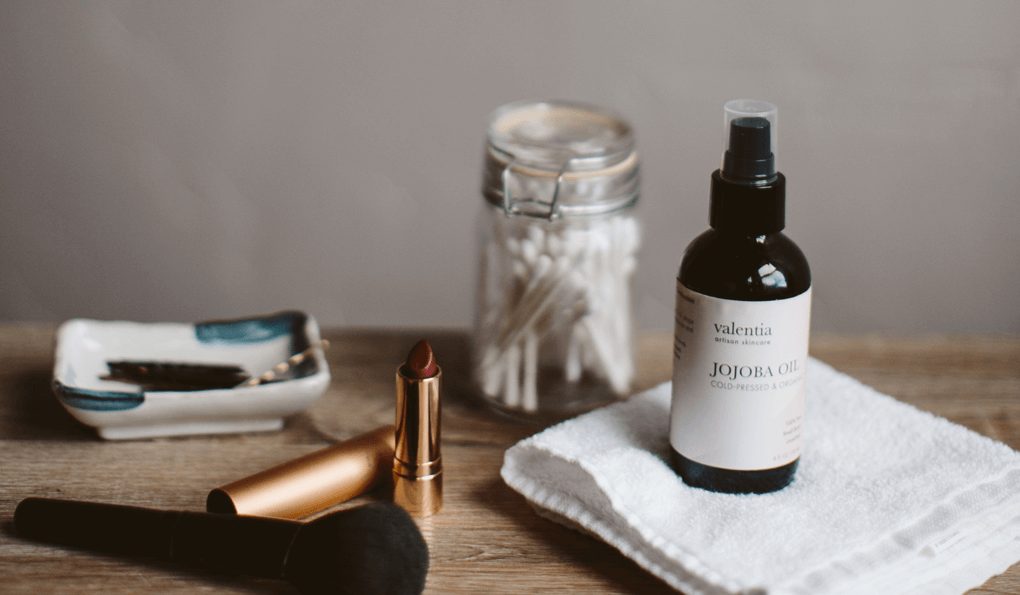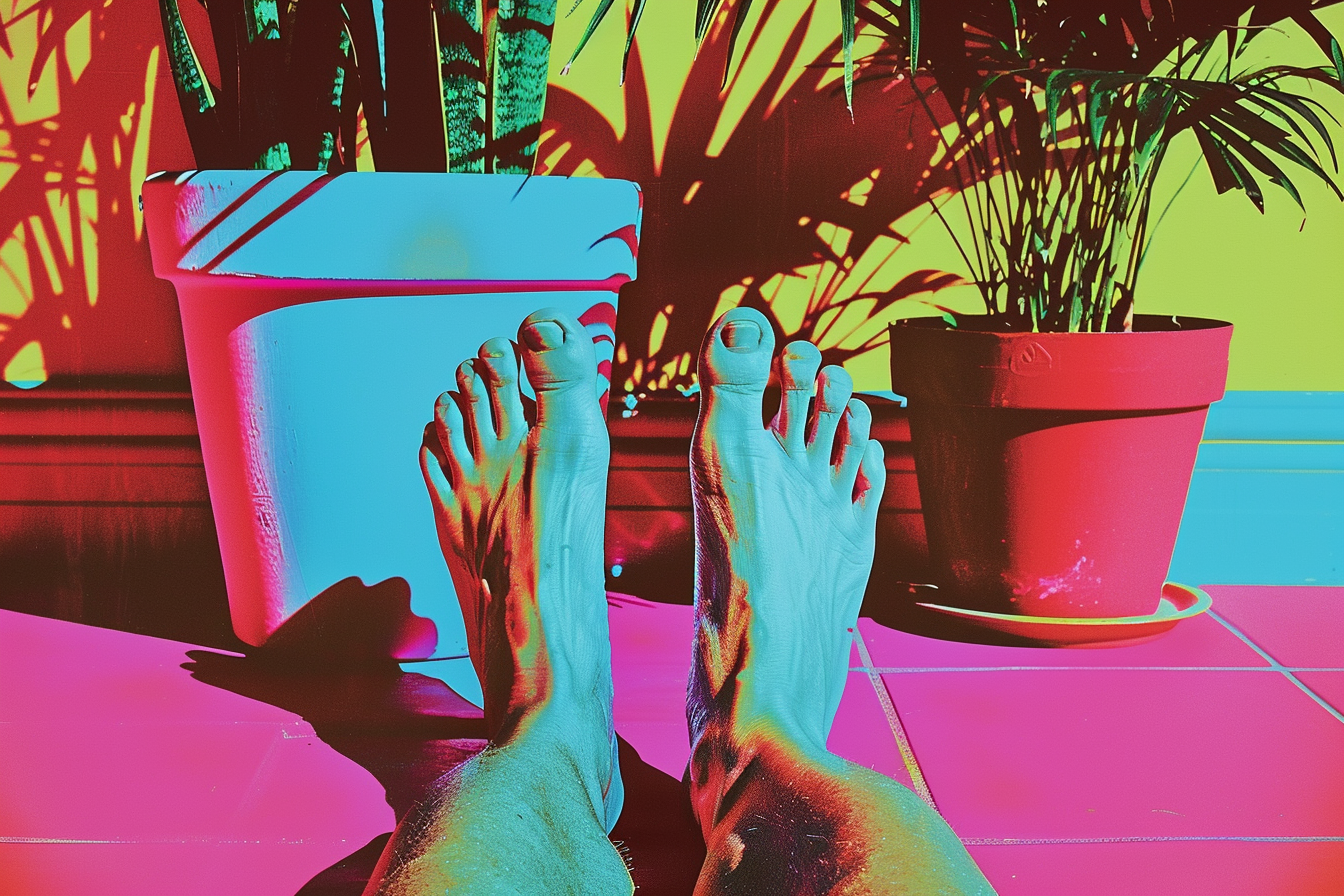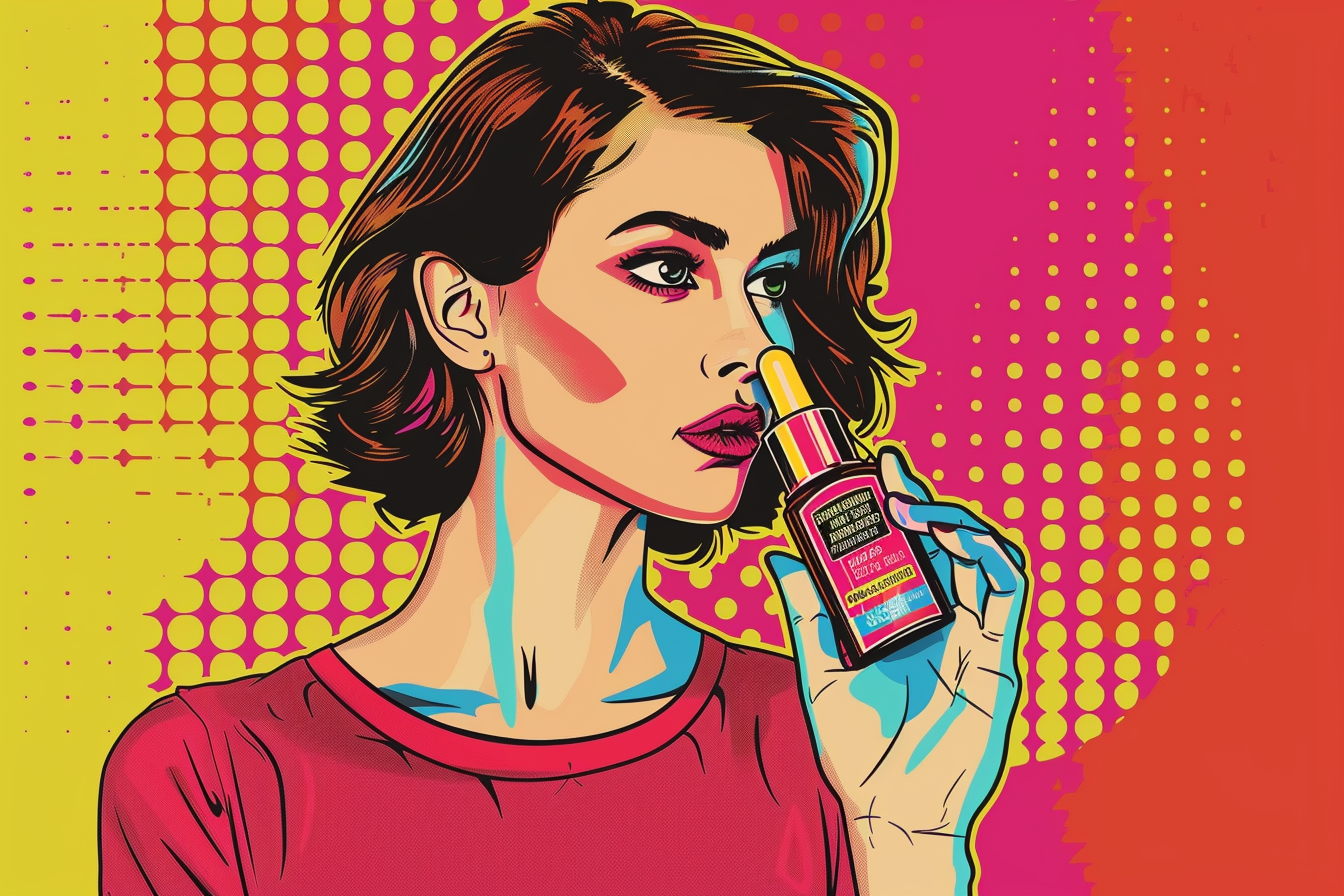
Embracing a clean, holistic lifestyle means eliminating toxic additives from the foods you eat, the cleansers you use to sanitize your home, and the products you use to care for your precious skin. It seems like a natural part of this process would be to seek out skincare products that are preservative-free, but what does this really mean?
Effective preservatives exist in nature, and with good reason. Without them, certain ingredients and formulas could spoil, losing their beneficial properties over time—and possibly even becoming dangerous to your health. So how do you determine whether the products you purchase actually need to be preserved? And which preservatives are safe?
We’ve rounded up the research so you can discover everything you need to know about natural and artificial preservatives to keep your holistic skincare journey safe, happy, and beautiful.

Dangers of Synthetic Preservatives
If you read the ingredient labels on most conventional skincare products, you’re likely to find one or more chemical preservative ingredients with long, difficult to pronounce names. And the latest research reveals that many of these synthetic chemical preservatives actually are as ominous as they sound. Some of the most disturbing include:
- Parabens: Commonly used to preserve a wide variety of lotions, skin cleansers, and scrubs, parabens are sometimes difficult to identify on ingredient labels. That’s because this ingredient is also used to make products smell nice, and so may simply be listed as “fragrance.” Parabens are absorbed through the skin and have been linked with reproductive, breast, endocrine, and skin issues.1,2,3,4,5
- Formaldehyde and formaldehyde-releasing preservatives: These chemicals—widely used to preserve cosmetics, hair products, and body washes—go by many other different names including imidazolidinyl urea, diazolidinyl urea, polyoxymethylene urea, sodium hydroxymethylglycinate, quaternium-15, DMDM hydantoin, 2-bromo-2-nitropropane-1, 3-diol (bronopol), and glyoxal. By any name, formaldehyde and formaldehyde-releasing preservatives are absorbed through the skin and may cause issues ranging from minor skin flare ups to serious cellular damage.6,7,8
- BHA and BHT: Not only do butylated hydroxyanisole (BHA) and butylated hydroxytoluene (BHT) turn up in creams, lotions, lip balms, and other beauty products—they’re also used to preserve foods. These chemicals are associated with some severe endocrine, reproductive, kidney, respiratory, stomach, and cellular issues.9,10,11,12
- Benzophenone and derivatives: These common chemical sunscreen ingredients are also used to preserve lip balms, moisturizers, and other skincare products against damage from UV light. Unfortunately, exposure to these synthetic preservatives is linked to reproductive, liver, kidney, endocrine, cellular, and skin troubles.13,14,15,16
- Phenoxyethanol: Used to inhibit microbial growth in ultrasound gel and skincare products including creams, lotions, lip gloss, sunscreen, and eye makeup, this chemical preservative has been associated with skin and respiratory problems in adults, as well as nervous system issues in infants.17,18
Learning about the possible health consequences of using synthetic preservatives raises the question of whether preserving skincare products might be more dangerous than not preserving them at all.
The hard truth is that water-based skincare formulas are susceptible to mold, fungi, bacteria, and yeast—all of which like to grow in a moist environment. Even if a package contains an airtight seal at the time of purchase, as soon as you open it and expose the contents to the warmth and moisture in your home, mold spores can easily take hold. As if that wasn’t enough to deter you, every time you dip your fingers into water-based creams, lotions, or cosmetics, you could also be introducing bacteria, fungi, and viruses to your favorite beauty products, which could then colonize and grow over time—with some very ugly results for your health.
(A few exceptions to this preservative requirement do exist, however. For example, authentic olive oil Castile soap’s natural pH level doesn’t allow for microbial growth. And the essential oil naturally contained in rose petals also keeps unwelcome microbial invaders at bay in rose water.19,20)
Obviously if your water-based skincare products begin to grow fuzz or smell strange, you’d toss them—but the trouble is that microorganisms may be growing at dangerous levels long before your senses can detect them. And to compound the issue, natural oxidation from exposure to air can begin to degrade your skincare essentials, leaving you with something that reacts quite differently with your skin than what you originally purchased.
This all creates a real dilemma for natural beauty enthusiasts: How can you avoid toxic chemicals and still keep your skincare products safe and fresh?
Natural Preservatives: A Safe and Effective Alternative
Thankfully, you don’t have to expose yourself to harmful chemicals in order to safely use water-based skincare products when so many naturally occurring preservative substances are available. These botanical ingredients help keep oxidation and unwelcome tiny invaders under control so your skincare products retain their beneficial properties over time.
One of the most exciting discoveries in this area is that botanical oils rank among the most effective natural preservatives, since many of them are not vulnerable to microbial invasion and/or oxidative degradation. This means that if you’re using an anhydrous (non water-based) skincare product like jojoba, argan, or rosehip oil, it doesn’t need to be preserved at all—it’s already preserving itself! And some botanical oils can even act as preservatives in water-based products.
With that understanding, here are some of the best oils and other natural preservatives to look for in your water-based skincare products and cosmetics:
- Essential oils including frankincense, lavender, rose, lemon, sage, and sandalwood
- Vitamin E oil
- Sweet orange oil
- Neem oil
- Rosemary extract
- Honeysuckle extract
- Honey
- Coconut oil
- Terpenes including menthol and thymol
- Castor oil
- Citric acid
- Vinegar
- Salt
- Raddish
Interestingly, Lactic Acid Bacteria (LAB) antimicrobial peptides also show promise as natural preservatives. Already used in food preservation, these amino acid compounds can be produced by probiotic microorganisms like Lactobacillus. Someday, these beneficial microbes may turn out to be an effective way to keep your skincare products preserved as well.21
Preserving water-based skincare products is a crucial part of keeping them safe to use—but there’s no reason to compromise that safety by exposing yourself to toxic chemicals. Taking the time to read the ingredient lists on skincare products and understand the way each ingredient functions will help you make smart, holistic purchases that beautifully align with nature and your core values.
References:
1. Winter, R. (2009). A consumer's dictionary of cosmetic ingredients. New York: Three Rivers Press.
2. Endocrine disruptors - Chemicals - Environment - European Commission. (2016). Retrieved from http://ec.europa.eu/environment/chemicals/endocrine/
3. Darbre, P. D., & Harvey, P. W. (2008). Paraben esters: review of recent studies of endocrine toxicity, absorption, esterase and human exposure, and discussion of potential human health risks. Journal of Applied Toxicology, 28(5), 561-578. doi:10.1002/jat.1358
4. Handa, O., Kokura, S., Adachi, S., Takagi, T., Naito, Y., Tanigawa, T., … Yoshikawa, T. (2006). Methylparaben potentiates UV-induced damage of skin keratinocytes. Toxicology, 227(1-2), 62-72. doi:10.1016/j.tox.2006.07.018
5. Okamoto, Y., Hayashi, T., Matsunami, S., Ueda, K., & Kojima, N. (2008). Combined Activation of Methyl Paraben by Light Irradiation and Esterase Metabolism toward Oxidative DNA Damage. Chemical Research in Toxicology, 21(8), 1594-1599. doi:10.1021/tx800066u
6. Coggon, D., Ntani, G., Harris, E. C., & Palmer, K. T. (2014). Upper Airway Cancer, Myeloid Leukemia, and Other Cancers in a Cohort of British Chemical Workers Exposed to Formaldehyde. American Journal of Epidemiology, 179(11), 1301-1311. doi:10.1093/aje/kwu049
7. Becker, L. C., Bergfeld, W. F., Belsito, D. V., Klaassen, C. D., Hill, R., Leibler, D., … Andersen, F. A. (2010). Final Report of the Amended Safety Assessment of Quaternium-15 as Used in Cosmetics. International Journal of Toxicology, 29(3_suppl), 98S-114S. doi:10.1177/1091581810363915
8. Andersen, F. A. (2000). Amended final report on the safety assessment of Glyoxal. International Journal of Toxicology, 19, 13-27.
9. Labrador, V., Fernández Freire, P., Pérez Martín, J. M., & Hazen, M. J. (2006). Cytotoxicity of butylated hydroxyanisole in Vero cells. Cell Biology and Toxicology, 23(3), 189-199. doi:10.1007/s10565-006-0153-6
10. Final Report on the Safety Assessment of BHT. (2002). International Journal of Toxicology, 21(2_suppl), 19-94. doi:10.1080/10915810290096513
11. Jeong, S., Kim, B., Kang, H., Ku, H., & Cho, J. (2005). Effects of butylated hydroxyanisole on the development and functions of reproductive system in rats. Toxicology, 208(1), 49-62. doi:10.1016/j.tox.2004.11.014
12. Histologic and Autoradiographic Studies on the Forestomach of Hamsters Treated With 2-tert-Butylated Hydroxyanisole, 3-tert-Butylated Hydroxyanisole, Crude Butylated Hydroxyanisole, or Butylated Hydroxytoluene2. (1986). JNCI: Journal of the National Cancer Institute. doi:10.1093/jnci/76.1.143
13. Rhodes, M., Bucher, J., Peckham, J., Kissling, G., Hejtmancik, M., & Chhabra, R. (2007). Carcinogenesis studies of benzophenone in rats and mice. Food and Chemical Toxicology, 45(5), 843-851. doi:10.1016/j.fct.2006.11.003
14. Nakagawa, Y., & Tayama, K. (2001). Estrogenic potency of benzophenone and its metabolites in juvenile female rats. Archives of Toxicology, 75(2), 74-79. doi:10.1007/s002040100225
15. Fediuk, D. J., Wang, T., Chen, Y., Parkinson, F. E., Namaka, M. P., Simons, K. J., … Gu, X. (2011). Tissue disposition of the insect repellent DEET and the sunscreen oxybenzone following intravenous and topical administration in rats. Biopharmaceutics & Drug Disposition, 32(7), 369-379. doi:10.1002/bdd.765
16. Nedorost, S. T. (2003). Facial erythema as a result of benzophenone allergy. Journal of the American Academy of Dermatology, 49(5), 259-261. doi:10.1016/s0190-9622(03)00440-7
17. Chasset, F., Soria, A., Moguelet, P., Mathian, A., Auger, Y., Francès, C., & Barete, S. (2015). Contact dermatitis due to ultrasound gel: A case report and published work review. The Journal of Dermatology, 43(3), 318-320. doi:10.1111/1346-8138.13066
18. U.S. FDA Warns Consumers Against Using Mommy's Bliss Nipple Cream. (2008). Retrieved from https://www.sfda.gov.sa/en/drug/news/pages/332-ar-01-6.aspx
19. Abdul, L., Abdul, R., Sukul, R., & Nazish, S. (2010). Anti-inflammatory and Antihistaminic Study of a Unani Eye Drop Formulation. Ophthalmology and Eye Diseases, 2, OED.S3612. doi:10.4137/oed.s3612
20. Boskabady MH, Shafei MN, Saberi Z, Amini S. (2011). Pharmacological effects of rosa damascena. Iranian Journal of Basic Medical Sciences,14(4):295-307.
21. Rai, M., Pandit, R., Gaikwad, S., & Kövics, G. (2016). Antimicrobial peptides as natural bio-preservative to enhance the shelf-life of food. Journal of Food Science and Technology, 53(9), 3381-3394. doi:10.1007/s13197-016-2318-5










